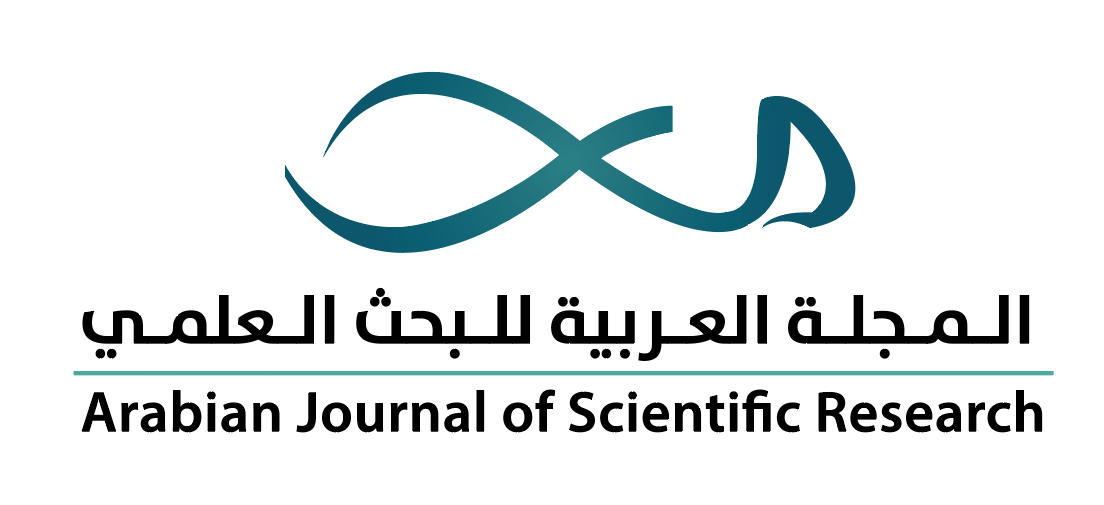-
oa تقييم فاعلية المُخثّرات الطبيعية في معالجة مياه الصرف الصحّي المُتأتية من مصانع النسيج: دراسة نجاعة التقنية عبر التحاليل الفيزيوكيميائية والسُّميّة الخلوية
- Source: Arabian Journal of Scientific Research-المجلة العربية للبحث العلمي, Volume 5(2024), Issue 1, Apr 2024,
-
- 16 May 2023
- 24 December 2023
- 30 April 2024
- Previous Article
- Table of Contents
- Next Article
Abstract
الملخص
يُعْتبرُ قطاع النسيج في تونس قوةً دافعةً للاقتصاد الوطني. ومع ذلك، فإن هذا القطاع يستهلك كمياتٍ كبيرةً من المياه العذبة، ومجموعة متنوعة من المواد الكيميائية، وبالتالي تُشكّل مياه الصرف الصحّي المُتأتية من قطاع النسيج تهديداً بيئيّاً. والغرض من هذه الدراسة هو البحث عن المُلَوّثات الموجودة في مياه الصرف الصحّي التي تم جمعها من ثلاثة مصانع للنسيج والتحقيق في تأثيرها على البيئة. وأظهرت التحاليل الفيزيوكيميائية (TSS ،BOD ،COD... إلخ) وجود نسبة عالية من المُلوّثات في العينات المُجمَّعة، كما كشف التحليل الكروماتوغرافي بواسطة UPLC-MS / MS عن وجود صبغة ثلاثي فينيل ميثان (الكريستال البنفسجي) في عينة واحدة. ويمكن أن يؤدي وجود الملوّثات الكيميائية في مياه الصرف الصحي لقطاع النسيج إلى تأثيرات ضارّة على النظام البيئي. في هذا السياق، تم إجراء تقييم للسُّميّة البيئية، باعتماد اختبار السُّمِّية خارج الجسم (in vitro) في أنظمة الخلايا حقيقية النواة (اختبار المذنب). ولم نلاحظ أيّ آثار ذات صلة بيولوجية لأيّ من العيّنات المُختبرة. وأظهرت النتائج أيضاً أن عملية معالجة المياه المُستعملة باعتماد تقنية التخثر والتلبد لا تقلل من تركيز المُلوّثات. ولهذا السبب سعينا إلى استخدام مواد تخثر طبيعية كمسحوق ألواح التين الشوكي Opuntia ficus indica ومسحوق قشور الباذنجان Solanum melongena. وأوضحت النتائج أن المعالجة باستخدام هذين المخثرين كانت فعّالة في تقليل تركيزات مؤشرات التلوث والسمية الجينية للعيّنات. وأَبْرَزت نتائج التحاليل أنَّ التركيز 0.8 غم/لتر مكّن من الحصول على أفضل النتائج بالنسبة لجميع المُخثرات الطبيعية المُستعملة. بعد مقارنة النتائج، لاحظنا أنَّ مسحوق ألواح التّين الشوكي كان تأثيره ملحوظاً في تقليل تركيزات مؤشرات التلوث؛ حيث تراوحت مختلف القيم بين BOD (119-63 مغ/لتر)، COD (204-97 مغ/لتر) وTSS (64-14 مغ/لتر)، كما أنّه أظهر النسب الأعلى والأفضل في إزالة المُلّونات (89.78%-92.87%).
The textile sector is a cornerstone of the Tunisian economy. However, this sector consumes significant volumes of fresh water and a wide variety of chemicals. Accordingly, derived wastewater is causing environmental disturbance. The objective of this study is to search for contaminants present in the finishing wastewater obtained from three textile industries and to investigate their environmental impact. The physicochemical analysis (COD, BOD, TSS, etc.) revealed a high pollutant load within the effluents collected from the three textile industries under investigation. Likewise, chromatographic analysis by UPLC-MS/MS revealed the presence of triphenylmethane (crystal violet) in one sample. The presence of micropollutants in textile wastewater could induce harmful effects on environmental flora and fauna. In this context, an ecotoxicological evaluation, in vitro bioassays (the comet test), was carried out. Results didn’t show any biologically relevant effects for all tested samples. The results also revealed that the coagulation-flocculation treatment process adopted by the textile industries is unable to reduce the pollutant load. For this reason, we have sought to use natural coagulants prepared from cactus Opuntia ficus indica and eggplant Solanum melongena. The results showed that the treatment using these two biocoagulants was effective in reducing the pollutant load and the genotoxicity of the effluents. The best results of coagulation-floculation were obtained with the concentration of 0.8 g/L for all natural coagulants. After comparing the results, we noticed that cactus powder had a significant effect on reducing the concentrations of pollution indicators, different values ranged between BOD (63-119 mg/l), COD (97-204 mg/l) and TSS (14-64 mg/l). Moreover, it showed the highest percentages and the best in removing colorants (89.78% - 92.87%).


